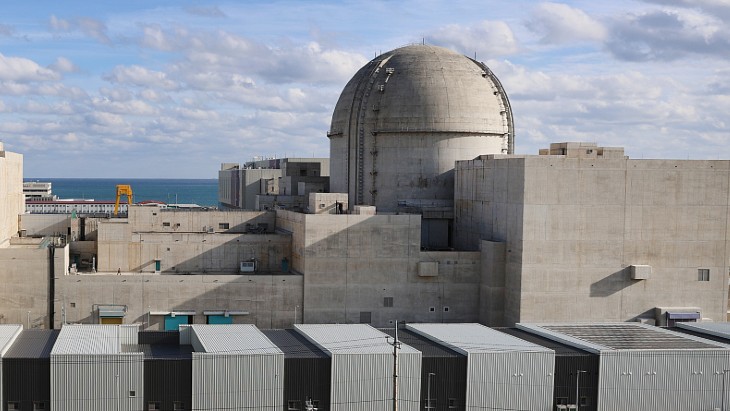Podesta, speaking to journalists at the COP29 UN climate conference in Baku, Azerbaijan, described the outcome of the US election as "obviously bitterly disappointing" after the progress he said the current Biden administration has made through actions such as commitments to cut emissions by 50 to 52 percent below 2005 levels, rejoining the Paris Convention and investments made through the Inflation Reduction Act and the Bipartisan Infrastructure Law.
"Our administration is working with the incoming Administration to ensure a peaceful and orderly transition of power," he said. "But what I want to tell you today is that while the United States federal government under Donald Trump may put climate action on the back burner, the work to contain climate change is going to continue in the United States with commitment and passion and belief."
The Inflation Reduction Act is "unleashing a clean energy boom in America that’s boosting innovation and lowering costs for clean energy technology by as much as 25%" and helping speed the deployment of clean energy across the globe, he said. "Here at COP29 and moving forward, the private sector must continue to lead - to make new and bigger investments in clean energy technologies, to continue to innovate and build a net zero economy."
The "We Are Still In" movement born in the wake of COP22 in Marrakesh and the decision by President Trump in 2017 to withdraw from the Paris Convention has continued to grow, and support for clean energy has become bipartisan in the USA, he said. "The economics of the clean energy transition have simply taken over," he said. "New power generation is going to be clean. The desire to build out next generation nuclear is still there."
Biden Administration legislation including the Inflation Reduction Act and the Bipartisan Infrastructure Law - and other measures such as the Accelerating Deployment of Versatile, Advanced Nuclear for Clean Energy Act and the prohibition on the import into the USA of Russian-produced low-enriched uranium - have supported the demonstration and deployment of new nuclear, the retention of existing US nuclear generating capacity, and the revitalisation of domestic nuclear supply chains.
The roadmap issued by the White House says that achieving economy-wide, net-zero greenhouse gas emissions in the USA by 2050 requires the installation of 1,500 to 2,000 GW of clean generation capacity - and nuclear is poised to play a critical role in this transition.
The framework identifies actions the US government, the US nuclear industry and power customers can take to enable successful deployments, and key opportunities associated with licensing and permitting, workforce, component supply chains, fuel cycle supply chains, and used fuel management - but it also notes that any federal activities identified "beyond those already reflected in the President’s Budget will be subject to relevant budgetary, regulatory, and policy development processes before adoption or execution".
The actions of the incoming Trump Administration on climate and nuclear policy remain to be seen. But on the campaign trail, Trump has signalled that he may be at least broadly supportive of new nuclear: for example, at a campaign rally in York, Pennsylvania, in August, Trump said if elected, he would "make a historic commitment to bring in advanced small modular nuclear reactors online".

_70181.jpg)



_72306.jpg)


_49562.jpg)





